General Methods for Ordinary Chinese Characters Handwriting Analysis
Formed in the process of writing, handwriting constitutes a letter symbol and identification system with personal characteristics. Handwriting analysis is an expertise used to analyze and judge whether his/her writing habits are of the same in nature, thereby determining whether the handwritings belong to the same person through comparing and authenticating two written letter symbols. Following is a brief discussion about the general methods for authenticating ordinary Chinese characters handwriting.
Firstly, we must familiarize ourselves with what handwriting characteristics include. Handwriting characteristics consist of all handwriting signs when an individual writes something in his/her habitual way.
ⅠHandwriting characteristics include calligraphy level, character pattern, font and size.
The Characteristics of front shape
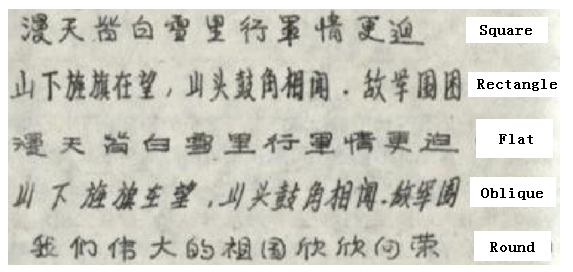
Characteristics of Character Pattern
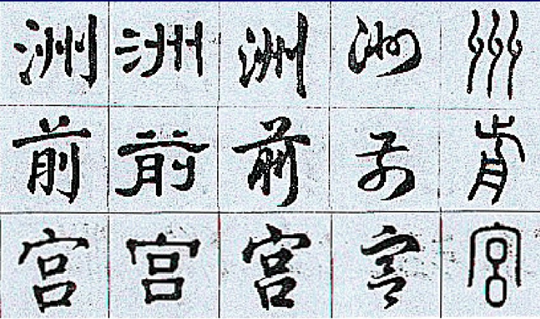
ⅡHandwriting Layout Characteristics
Namely, it constitutes the arrangement characteristics written letters show in a paper, including characteristics of subsection starting location, formulaic speech arrangement and letter combination.
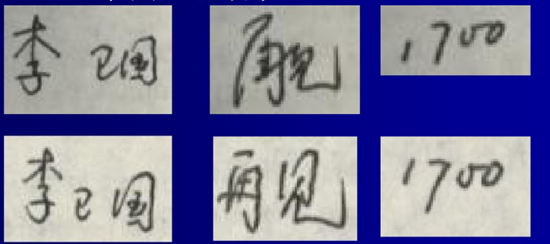
Ⅲ Writing Method Characteristics
It refers to the basic structural form of one letter, including variant, customarily simplified one and cursive handwriting.
Ⅳ Collocation Characteristics
It refers to the juncture between strokes or character components
(1) Juncture Between Strokes
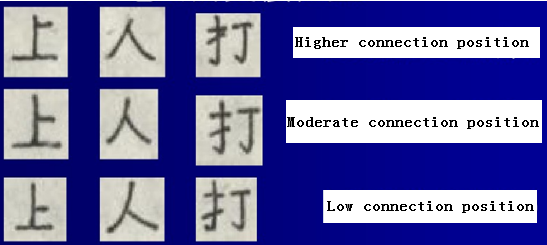
(2) Distance Between Neighboring Strokes
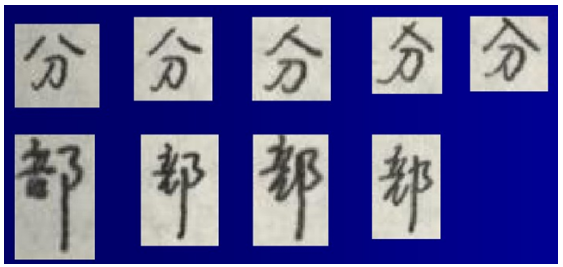
(3)Location Between Character Components
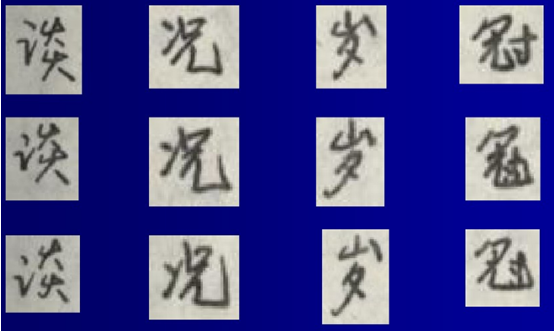
ⅤProportion Characteristics
It refers to the relationship between strokes and character components in terms of size, length and width.
(1)Stroke Length
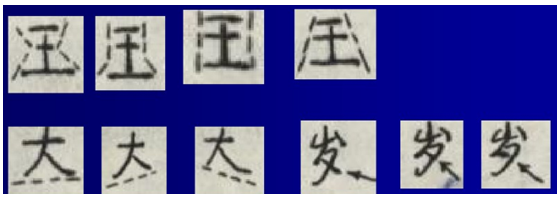
(2)Size Between Character Components
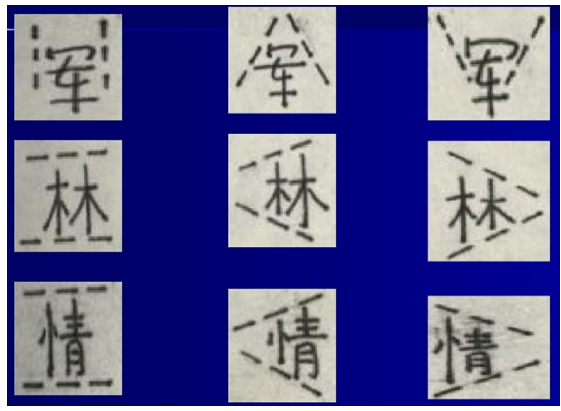
Ⅵ Stroke Order Characteristics
It refers to the writing order a stroke or component is used to form a Chinese character
(1) Observe the Start and End Strokes
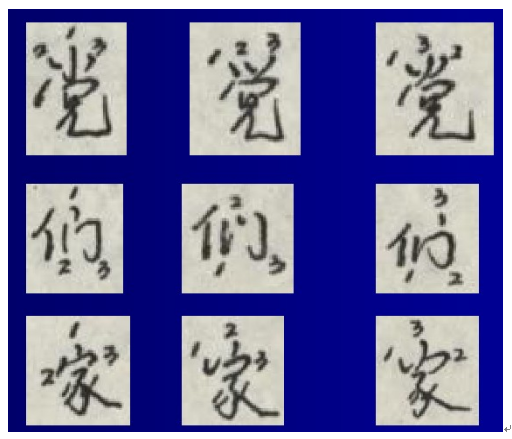
(1)Observe Pen Movement
(2)Observe the Height of Strokes
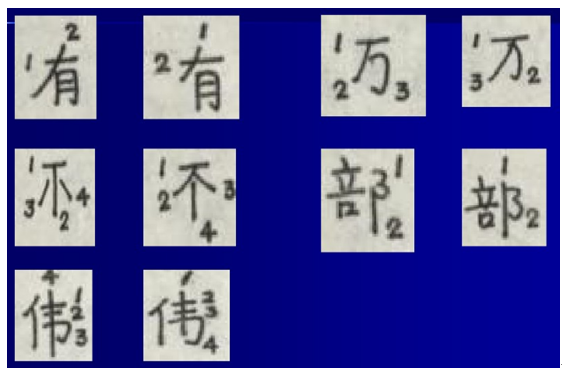
(3)Observe the Collocation of Character Components
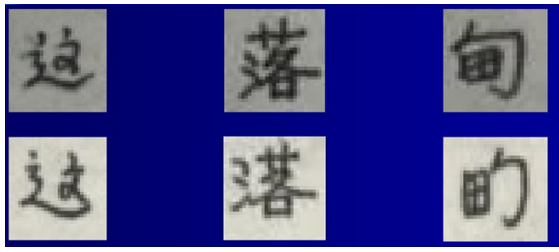
Ⅶ Pen Movement Characteristics
(1)Start and End Stroke Actions. Start stroke includes straight start stroke, side start stroke and rotary start stroke.

(2)End Stroke Pencraft and Action

(3)Pen Movement Direction
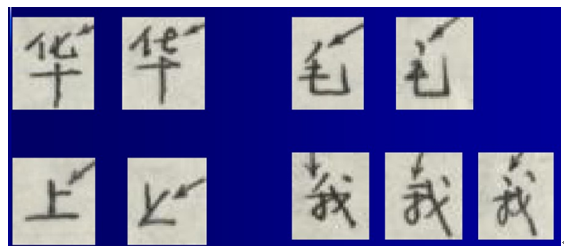
(4) Stroke Form
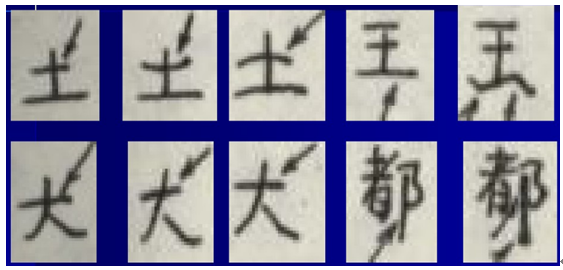
ⅧPen Mark
It refers to a reflection of special signs when personal writing exercises influences on a pen point.

Pen Indentation Characteristics
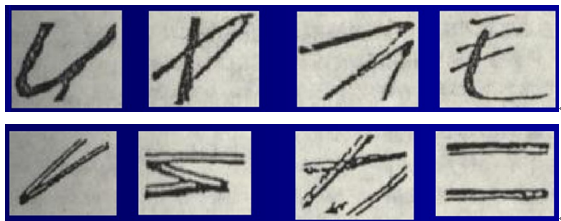
Ballpoint Indentation Characteristics

The authenticity of handwriting can be analyzed from the following aspects:
Firstly, judgment can be made by seeing whether the whole text conforms to common rules. Attention must be paid to the consistency in the whole handwriting in terms of writing level and speed, any unsmoothness, shake or improper pause in pen movement and any addition, alteration and obliteration. In case of any circumstance above, the handwriting may be false.
Secondly, judgment can be made by observing the writing characteristics of a same character and stroke or component. It may be false if there is any inconsistency or irregularity between before and after handwriting.
Thirdly, judgment can be made by observing the structure of a character or the balance of its stroke collocation. Attention must be paid to any serious disproportion in stroke length or height and other abnormalities.
Fourthly, judgment can be made by observing the reverse trend for handwriting change. It may be false in case of any reverse or wrong character.
Fifthly, judgment can be made by finding any inconsistency between handwriting and written language levels. Generally, one’s written language level matches that of his/her handwriting. It may be false in case of any significant difference.
How to recognize an imitated handwriting?
In recognizing an imitated handwriting, you must pay attention to the following three steps:
-
Careful observations must be made of whether there is any imitation. To this end, you must familiarize yourself with the methods and features belonging to inspected materials, and try to find any abnormality in the pen movement, character pattern, layout and punctuation. For instance, you must observe whether pen movement is slow, bending or shaky, and see whether word form and size are uniform and whether there is even layout and arrangement. Additionally, attention must be paid to whether there is any abnormal sign, such as indentation, copy trace and scratch.
-
Thought must be given to the possibility that the handwriting of the inspected materials is imitated one in any of the following circumstances. The inspected material and sample material have similar significant features, but have differences in subtle ones. Some characters, words or numbers in the inspected material share the same shape as those in the sample. In case of any indentation trace, printing and dyeing trance or copy trace in the suspect’s handwriting, you must consider whether there is copy.
There are the following ways to show the faded handwriting:
-
Fluorescent Inspection and Photography
According to the principle that it ill will shine after an object is stimulated, the faded latent image will give out fluorescent of different color and strength that distinguish itself from other parts when exposed to ultraviolet light and blue light. As a result, ultraviolet light or blue light with different wavelengths can be used to stimulate the light source for inspection and photography.
-
Manifestation Through Chemical Reagent.
Any chemical solution that has a chromogenic reaction with ferric ion can be used to manifest the faded original text if it was written in blue or black inks.
-
Sulfur Cyanide Method

Recent Comments